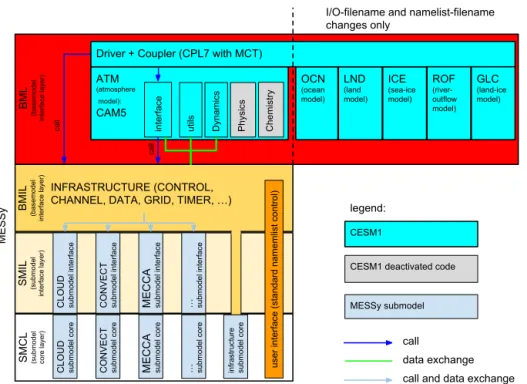Implementation of the Community Earth System Model (CESM) version 1.2.1 as a new base model into version 2.50 of the MESSy framework
Texto
Imagem




Documentos relacionados
Four simulations with the ECHAM/MESSy At- mospheric Chemistry (EMAC) model have been evaluated with the Earth System Model Validation Tool (ESMValTool) to identify differences
A coupled atmospheric chemistry and climate system model was developed using the modal aerosol version of the National Center for Atmospheric Research Community Atmosphere
Utilizing the MERRA2 reanalysis and a fully coupled chemistry–climate simulation with the Community Earth System Model (CESM1(WACCM)) of the National Center for Atmospheric
To test the impact of the LUTs that are used to derive the effective cloud fraction and effective cloud pressure, we pro- duced datasets using version 2 algorithm with the new and
In this work, we apply differ- ent anthropogenic emission inventories in the Weather Re- search and Forecasting Model with Chemistry (WRF-Chem) version 3.3 using Model for Ozone
This messy process of model building becomes a regular source of knowledge generation because of two crucial components of model building: decision points and contextual
The ECHAM/MESSy Atmospheric Chemistry (EMAC) model is coupled to the ocean general circulation model MPIOM using the Modular Earth Submodel System (MESSy) interface.. MPIOM is
The structure of the remelting zone of the steel C90 steel be- fore conventional tempering consitute cells, dendritic cells, sur- rounded with the cementite, inside of